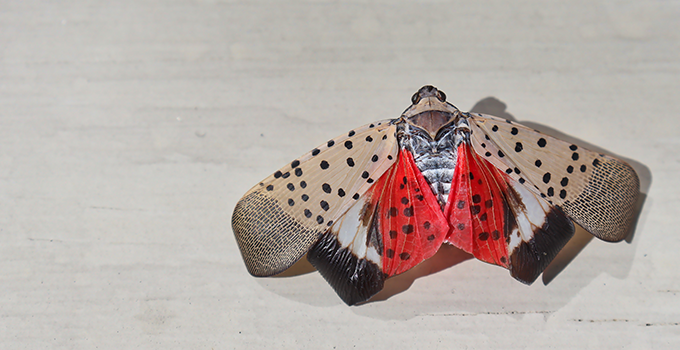Spotted lanternflies are coming back this year all over the East Coast. And you can expect to see a new infestation wave as soon as May in Pennsylvania. This spotted lanternfly 2024 infestation is expected to kill more plants similar to previous years. They typically go after trees and grapevines and cause substantial damage, often killing plants they feed on.
Spotted lanternflies are considered an invasive species due to the immense harm they cause to local ecosystems, along with their lack of natural predators in the US.
The Pennsylvania Department of Agriculture and Penn State University College of Agricultural Sciences are keeping a close eye on them, but they don’t offer any extermination services.
So it’s best to let pest control companies like Seitz Bros reduce them around your home. We’re one of few pest control companies in Pennsylvania tackling this infestation by offering spotted lanternfly reduction services.
Will lanternflies come back in 2024?
Yes, lanternfly eggs are hatching due to warmer weather months. Their lifecycle revolves around egg masses in fall through spring, hatching as nymphs spring through fall, and emerging as adults in summer and fall. First spotted in Berks County in 2014, spotted lanternfly populations reappear every year. Despite efforts from federal and local governments, it seems their spread won’t end anytime soon.
Killing lanternflies on sight and practicing pest control can help reduce their numbers, but there are too many to take on alone. The best solution to lasting results is expert spotted lanternfly reduction. Seitz Bros is equipped to find the source of lanternfly infestations, give treatment, and provide solutions for future sightings.
What month are spotted lanternflies most active?
Spotted lanternflies are most active in the summer months. Depending on the region and local weather, expect to see the bulk of lanternflies in July. But you may see them as early as May if the weather in Pennsylvania is warm enough. If you spot a lanternfly in spring or early summer, it’ll likely be in egg or nymph form.
Regardless of what stage a lanternfly is in when you see it, it’s best to eliminate it as soon as possible. But if you decide to exterminate lanternflies on your own, you may find it takes up too much of your time and resources.
Where are spotted lanternflies in PA?
Spotted lanternflies are in 52 counties according to Pennsylvania Agriculture Secretary, Russell Redding. When they first appeared in the state, they were mostly in central PA – but are now present in most counties. Although northern PA experiences fewer sightings, it’s safe to assume that you’ll likely see a spotted lanternfly in any part of the state.
Where to Report Spotted Lanternfly in PA
Local PA agencies, primarily the Pennsylvania Department of Agriculture and Penn State, have asked residents to report sightings for optimal tracking. Reporting sightings helps pinpoint where reduction efforts should be made.
There are two main reporting sources if you spot a spotted lanternfly in Pennsylvania:
- Online reporting tool – Use the interactive map on this page to report exactly where you found a lanternfly.
- Hotline – Call this number to speak to someone about a sighting: 1-888-4BAD-FLY (1-888-422-3359).
Spotted Lanternfly Control
Spotted lanternflies are a relatively new invasive species that can appear around your home. Although federal and local governments encourage US citizens to kill these lanternflies on sight, professional pest services can handle these pests more efficiently.
Because we’re passionate about Pennsylvania’s ecosystem and keeping your home pest-free, we’ve equipped ourselves to take on the invasive spotted lanternfly. Seitz Bros offers lanternfly home inspection, insulation, and green pest control services. We’ve been around since 1975, offering one-time service and protection plans to suit exactly what you need.
Contact us today for a free quote!
Spotted Lanternfly 2024 Infestation Pest Control in Pennsylvania & New Jersey
Serving Northeast & Central PA | Lehigh Valley | Pocono Mountains | Western NJ

